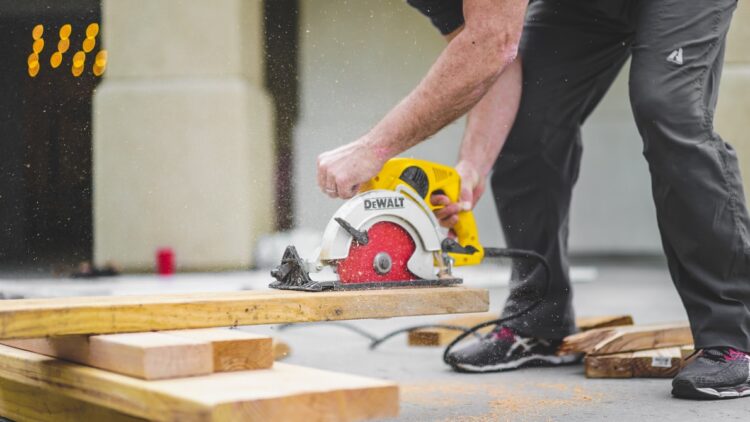The construction industry is becoming competitive with every passing day, the more reason you need to be innovative with how you run your construction plant or equipment. One way of being ahead of your competitors and getting the most out of your construction plant is optimizing overall equipment effectiveness (OEE)
OEE refers to the global standards of measuring manufacturing productivity. It determines how well a manufacturing operation is utilized in the equipment’s running time to ensure its full potential. It, therefore, leads to the enhancement of equipment performance to improve production.
What does OEE measure?
Oee measures three factors, namely; availability, performance, and quality.
Availability
Availability tracks availability loss. It includes any event that can stop production for a considerable length of time that the operator will log a reason. Reasons are any events that cause the stop of production, usually denoted using a number or classification because of efficiency.
Reasons that can cause availability loss are planned stops and unplanned stops. Planned stops are activities or events that affect the scheduled production whereby the production should be running steadily, but it is not. Common reasons for unplanned stops are equipment breakdown and material shortages.
On the other hand, planned stops are change-over-time, which refers to any events associated with the preparation or adjustment of the machines. It is included in the OEE analysis because it is time that could have been useful in manufacturing. Even though it is impossible to eliminate change-over-time, it can reduce significantly.
Performance

Performance accounts for performance losses, which are any events that cause the production time to run at less than the maximum speed. It can be unavoidable start-up loss or process loss (where an improvement project will occur).
The two types of performance loss are small stops and slow cycles. Small stops are any pauses in production that are not long enough for the operator to log them as reasons.
Slow cycles are any time productions that do not achieve the ideal cycle time while operating in a steady-state. Its calculation involves comparing the excellent cycle rate (the theoretical maximum speed required to produce a discrete part) with the actual cycle rate.
Events that can cause performance loss are misfeeds, substandard materials, machine wear, and jams. OEE can track such an efficiency well as it would not appear on the operator’s notes.
Quality
Quality tracks quality loss, which accounts for the products that did not meet the desired quality or quality standards. Quality is the first pass yield. It means the good parts that the equipment successfully produces without requiring any rework to be done.
Quality loss is seen as the final equipment loss because even a machine running with a 100% possible speed at a 100% scheduled time can produce a defected product.
Quality losses also include reworked parts for the customer; this part of strictness allows OEE to be suitable in measuring quality control projects.
To learn more about automated maintenance software check limblecmms.com. Here are some of the significant financial benefits of implementing an adequate OEE in your construction plant.
Reduced maintenance cost

Overall equipment effectiveness enables you to foresee breakdowns and put measures in place to prevent them from happening.
An OEE team provides you with a machinery maintenance log template that contains information on scheduled maintenance of all your construction plant machinery. It helps you to maintain and service your machinery in the specified time to avoid serious breakdowns and ensure they operate efficiently.
For instance, you can hire repair personnel and buy maintenance equipment early instead of acting on an emergency basis. Being proactive in maintenance steps can result in considerable savings compared to repairing a machine once it has already broken down.
A reduced operation cost
In the cases where you have a critical machine that is faulty, it could cause a slow down in the production process and affect the delivery process. It can also cause a breach of the delivery deadlines to the clients and impact the cash flow and earnings.
With each breakdown, a construction plant loses money. Overall equipment effectiveness helps you be proactive in dealing with such problems to avoid losses financially and utilize proper time management.
Quality production

When calculating OEE, the team considers the number of quality parts produced, the number of scrapes, and defected products compared to the total parts produced. It also must include the reason for defects.
Using this information, the company can wipe out any causes of defects in production, thus reducing costs associated with reworking in the production department. Following that, there is a significant reduction in reworking and warranty costs. Quality production leads to standard construction and hence more earnings.
Maximum production capability
A reduced number of defects in the machinery and a higher efficiency of equipment leads to high production levels with the same resources and running time.
To improve productivity in construction work, it is mandatory to improve the equipment and machinery’s efficiency and effectiveness. OEE helps you to achieve high equipment reliability and maintainability that leads to the desired production output.
As a result, you can achieve maximum production capacity, which translates to more significant earnings and more clients.
Labor efficiencies

One of the main challenges that construction companies face is an increasing labor requirement each day. Construction managers always aim at increasing productivity with their current workforce. Because an OEE captures the operator’s performance and productivity data, you can use it to allocate the proper workforce to each department based on its productivity level.
With each improvement of the equipment’s effectiveness, the labor requirement reduces. Therefore, you can analyze the effectiveness of additional capacity within the current workforce instead of hiring new labor.
Improved personnel productivity
An automated OEE is possible with automated maintenance software. It captures and reports downtime efficiency automatically. This way, supervisors or workers don’t have to personally check, record, analyze, and report downtime and break down reasons for the management. It saves time on non-value works of reporting and allows the workers to focus on more beneficial construction work tasks.
The bottom line
By measuring overall equipment performance (OEE), you will discover valuable information on how to improve your construction plant work activities. Additionally, it helps you identify mishaps that can lead to losses, measure progress, and increase productivity.
 Hi Boox Popular Magazine 2024
Hi Boox Popular Magazine 2024



